Search Result
Results for "
Caco-2 cells
" in MedChemExpress (MCE) Product Catalog:
1
Biochemical Assay Reagents
5
Isotope-Labeled Compounds
| Cat. No. |
Product Name |
Target |
Research Areas |
Chemical Structure |
-
- HY-14291
-
|
LAF237; NVP-LAF 237
|
Dipeptidyl Peptidase
Ferroptosis
Apoptosis
|
Metabolic Disease
|
|
Vildagliptin (LAF237) is a potent, stable, selective dipeptidyl peptidase IV (DPP-IV) inhibitor with an IC50 of 3.5 nM in human Caco-2 cells. Vildagliptin possesses excellent oral bioavailability and potent antihyperglycemic activity .
|
-

-
- HY-14291B
-
|
(2R)-LAF237; (2R)-NVP-LAF 237
|
Others
|
Metabolic Disease
|
|
(2R)-Vildagliptin is the isomer of Vildagliptin (HY-14291), and can be used as an experimental control. Vildagliptin (LAF237) is a potent, stable, selective dipeptidyl peptidase IV (DPP-IV) inhibitor with an IC50 of 3.5 nM in human Caco-2 cells. Vildagliptin possesses excellent oral bioavailability and potent antihyperglycemic activity .
|
-
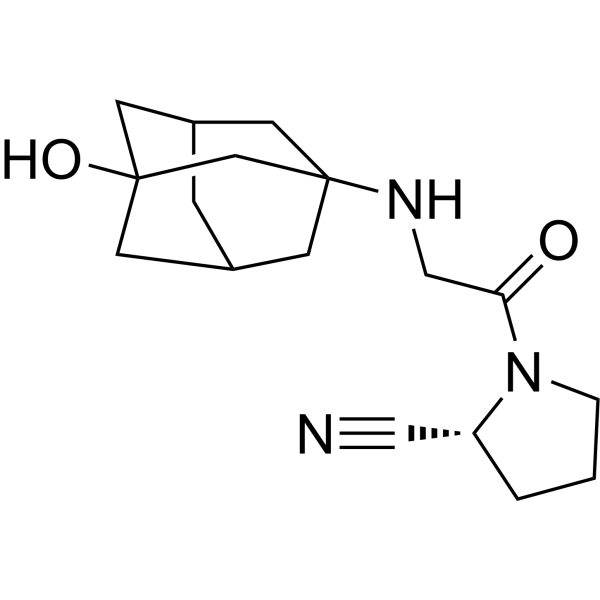
-
- HY-13749A
-
-
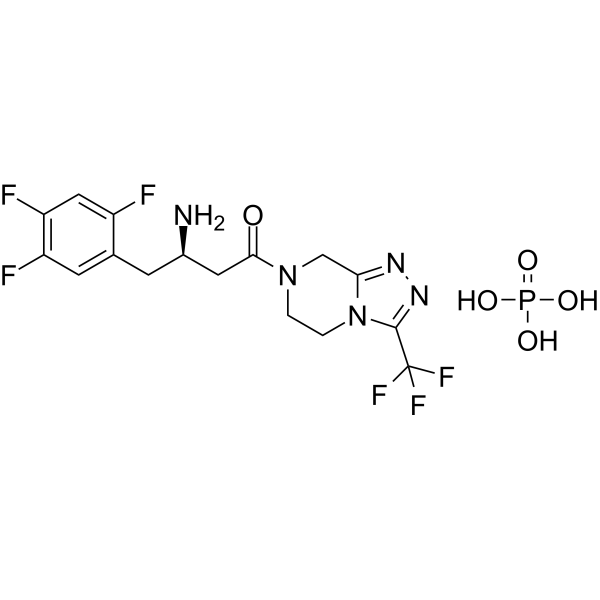
-
- HY-14291A
-
|
LAF237 dihydrate; NVP-LAF 237 dihydrate
|
Dipeptidyl Peptidase
Ferroptosis
Apoptosis
|
Metabolic Disease
|
|
Vildagliptin dihydrate (LAF237 dihydrate) is a potent, stable, selective dipeptidyl peptidase IV (DPP-IV) inhibitor with an IC50 of 3.5 nM in human Caco-2 cells. Vildagliptin dihydrate possesses excellent oral bioavailability and potent antihyperglycemic activity .
|
-
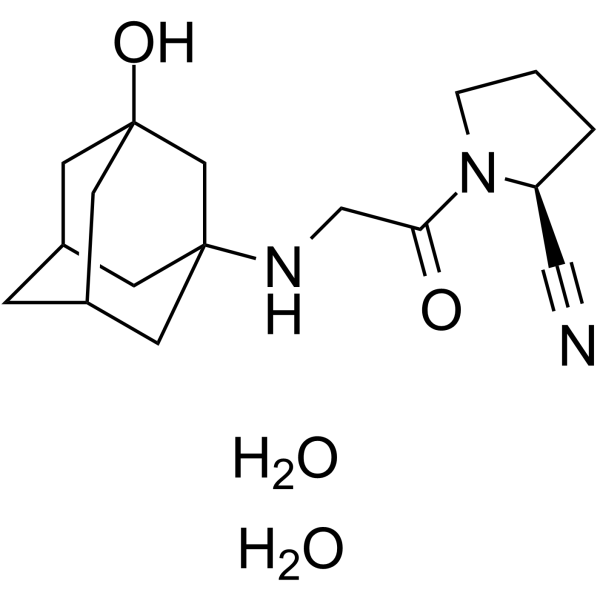
-
- HY-14291S2
-
|
LAF237-13C5,15N; NVP-LAF 237-13C5,15N
|
Isotope-Labeled Compounds
|
Metabolic Disease
|
|
Vildagliptin- 13C5, 15N (LAF237- 13C5, 15N; NVP-LAF 237- 13C5, 15N) is a 13C- and 15N-labeled Vildagliptin (HY-14291). Vildagliptin (LAF237) is a potent, stable, selective dipeptidyl peptidase IV (DPP-IV) inhibitor with an IC50 of 3.5 nM in human Caco-2 cells. Vildagliptin possesses excellent oral bioavailability and potent antihyperglycemic activity .
|
-

-
- HY-13749B
-
-
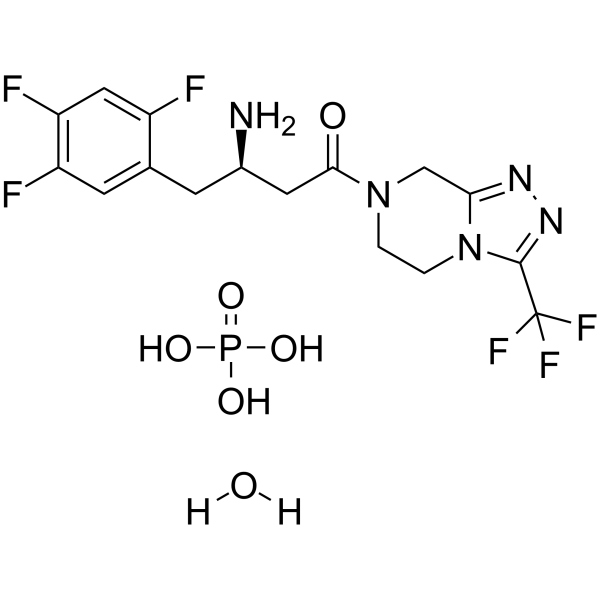
-
- HY-138068
-
|
|
Others
|
Metabolic Disease
|
|
L-Tryptophanylglycine (Trp-gly) is a dipeptide that can inhibit Ceronapril uptake by Caco-2 cells, with a Ki of 7.19 mM .
|
-
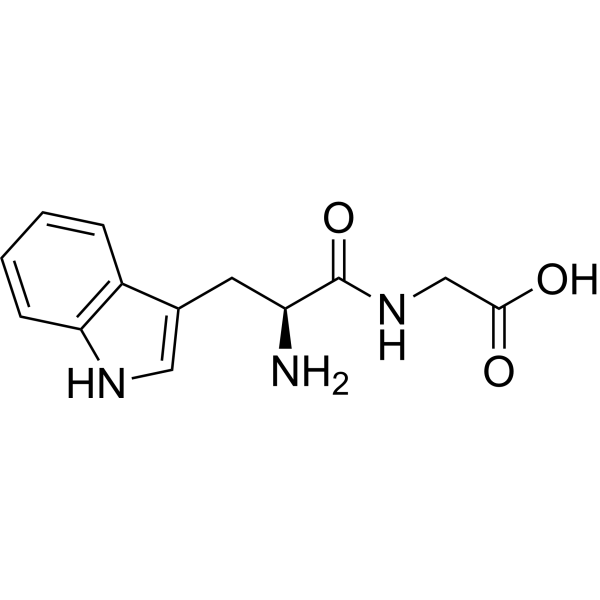
-
- HY-13749
-
-
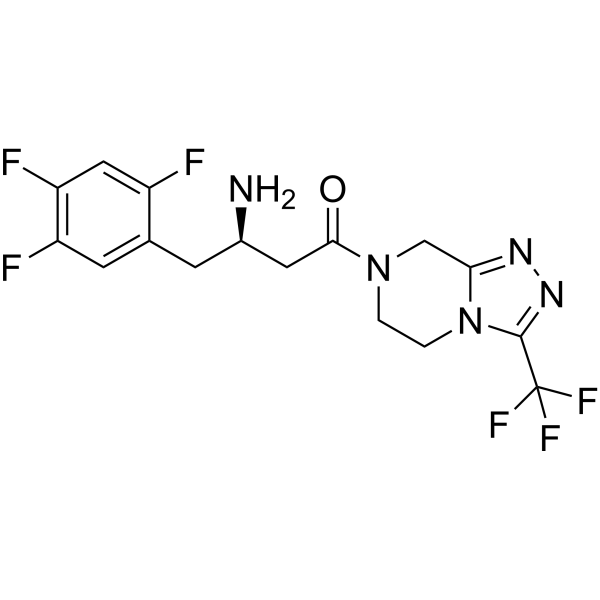
-
- HY-W009141
-
|
Glyceryl palmitate
|
P-glycoprotein
|
Cancer
|
|
1-Monopalmitin, a bitter melon extract, inhibits the P-glycoprotein (P-gp) activity in intestinal Caco-2 cells .
|
-
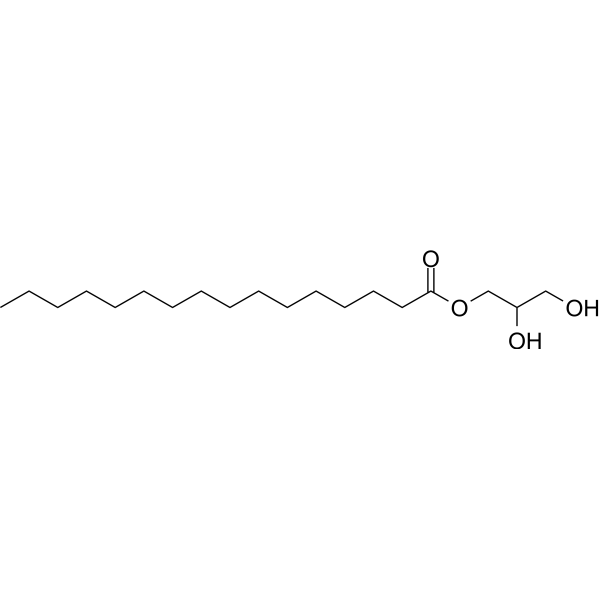
-
- HY-N4236
-
|
|
Others
|
Others
|
|
Angelol A is a coumarin isolated from the roots of Angelica pubescens f. biserrata, which is passive diffusion as the dominating process in Caco-2 cell monolayer model .
|
-
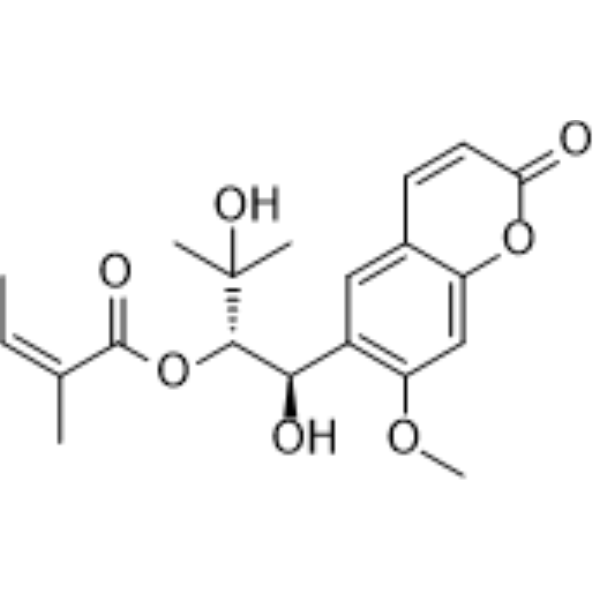
-
- HY-N11680
-
|
|
Others
|
Cancer
|
|
Microcystin-LF is a bacterial metabolite. Microcystin-LF is a phenylalanine variant of Microcystin-LR. Microcystin-LF has cellular toxicity on Caco-2 cells .
|
-
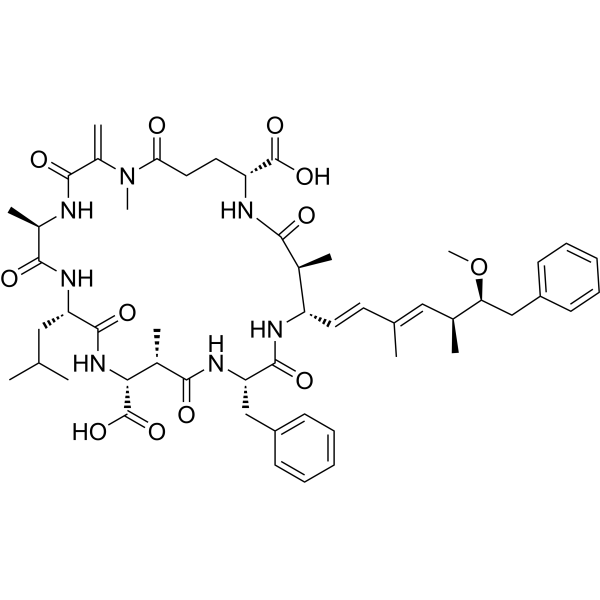
-
- HY-N4235
-
|
|
Others
|
Inflammation/Immunology
|
|
Angelol B is a coumarin isolated from the roots of Angelica pubescens f. biserrata, which is passive diffusion as the dominating process in Caco-2 cell monolayer model .
|
-

-
- HY-13749C
-
|
(S)-MK-0431 phosphate
|
|
|
|
(S)-Sitagliptin phosphate is the less active S-enantiomer of Sitagliptin phosphate. Sitagliptin phosphate (MK-0431 phosphate) is a potent inhibitor of DPP4 with an IC50 of 19 nM in Caco-2 cell extracts .
|
-
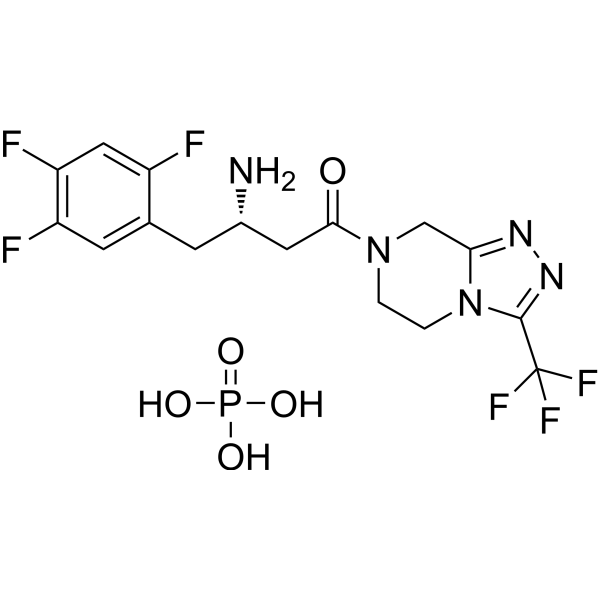
-
- HY-13749D
-
-

-
- HY-13749AS
-
|
|
Dipeptidyl Peptidase
Autophagy
|
Metabolic Disease
|
|
Sitagliptin-d4 (phosphate) is the deuterium labeled Sitagliptin phosphate. Sitagliptin phosphate (MK-0431 phosphate) is a potent inhibitor of DPP4 with an IC50 of 19 nM in Caco-2 cell extracts[1][2].
|
-
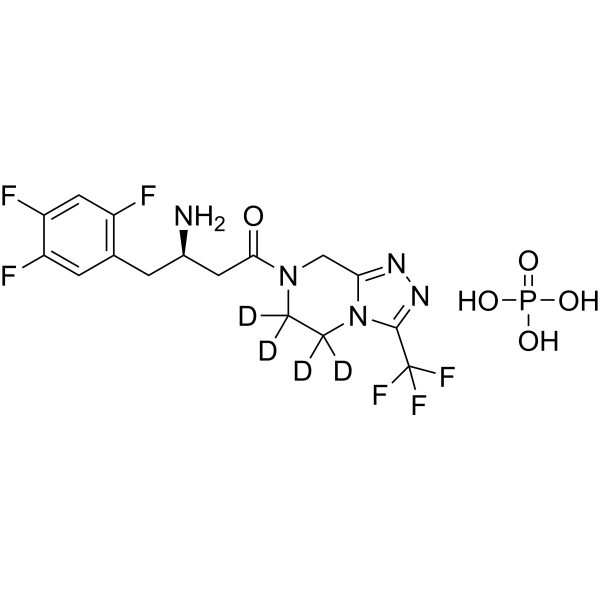
-
- HY-133948
-
|
Glyceryl palmitoleate
|
Biochemical Assay Reagents
|
Others
|
|
1-Palmitoleoyl glycerol is a biologically active monoacylglycerol. It increases daunomycin accumulation, shown to inhibit P-glycoprotein in Caco-2 cells. 1-Palmitoleoyl glycerol induces thymocyte apoptosis.
|
-

-
- HY-13749S1
-
|
MK-0431-d4 hydrochloride
|
Dipeptidyl Peptidase
Autophagy
|
Metabolic Disease
|
|
Sitagliptin-d4 (hydrochloride) is the deuterium labeled Sitagliptin[1]. Sitagliptin (MK-0431) is a potent inhibitor of DPP4 with an IC50 of 19 nM in Caco-2 cell extracts[2].
|
-

-
- HY-20808
-
|
|
COX
|
Cancer
|
|
Antioxidant agent-15 (Compound 4) is a potent antioxidant inhibition activity, with the IC50 of 15.44 nM. Antioxidant agent-15 inhibits tumor cell growth in Hela, Hep G2 and Caco-2 cells, with the IC50 of 395.26, 400.4 and 24.6 nM, respectively .
|
-
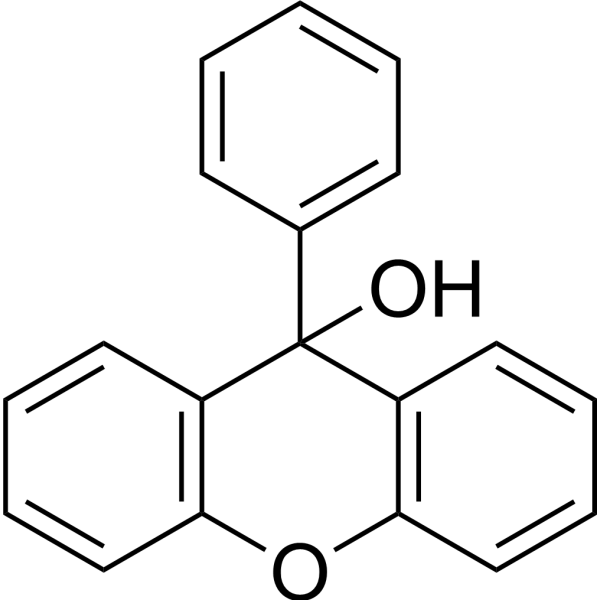
-
- HY-P4296
-
|
|
Amino Acid Derivatives
|
Others
|
|
H-Gly-Sar-Sar-OH is an orally active tripeptide. H-Gly-Sar-Sar-OH is transported through PepT1 within Caco-2 cells. H-Gly Sar Sar OH has potential applications in material transportation .
|
-
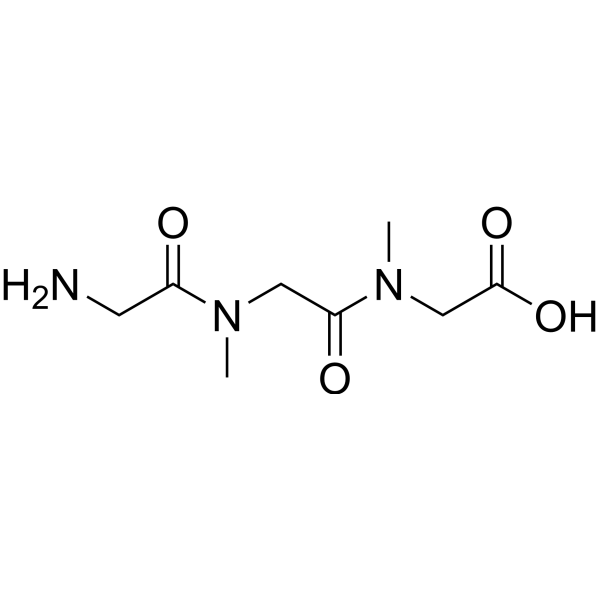
-
- HY-14291S1
-
-

-
- HY-14291S
-
-

-
- HY-149408
-
|
|
Monoamine Oxidase
|
Cancer
|
|
MAOA-IN-1 (compound 15) is an orally active MAOA inhibitor with cytotoxicity against prostate cancer cells. MAOA-IN-1 has Caco-2 permeability and lower CNS permeability. MAOA-IN-1 can be further used in the research of anti-cancer and anti-inflammatory indications .
|
-
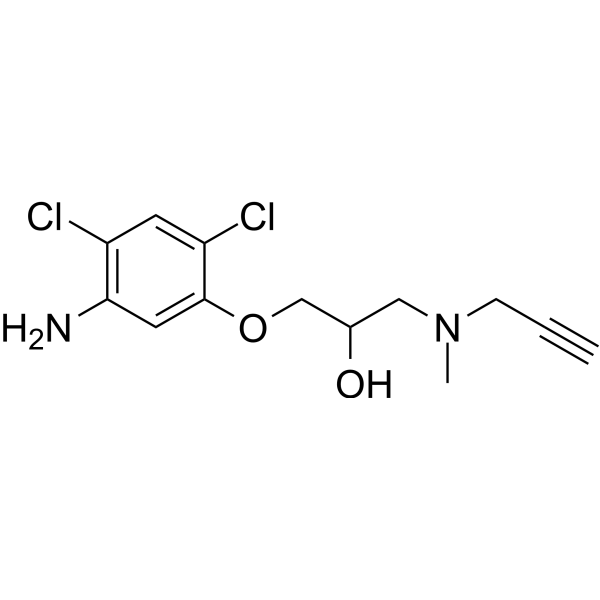
-
- HY-156526
-
|
|
HIF/HIF Prolyl-Hydroxylase
|
Others
|
|
PHD-IN-1 (compound 80) is a potent inhibitor of PHD2,with an IC50 value of ≤5 nM. PHD-IN-1 shows EC50s of 2.5 μM in EPO Elisa assay both in Caco2-HIFla-HiBiT-clone-1 cells and Hep3B cells,respectively .
|
-
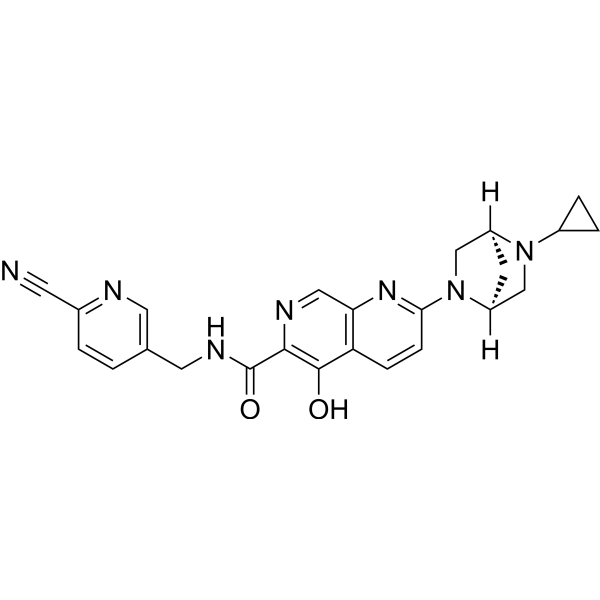
-
- HY-N2009
-
|
3,4-Dihydroxy-5-methoxybenzoic acid
|
|
|
|
3-O-Methylgallic acid (3,4-Dihydroxy-5-methoxybenzoic acid) is an anthocyanin metabolite and has potent antioxidant capacity. 3-O-methylgallic acid inhibits Caco-2 cell proliferation with an IC50 value of 24.1 μM. 3-O-methylgallic acid also induces cell apoptosis and has anti-cancer effects .
|
-

-
- HY-111956
-
|
|
Fluorescent Dye
|
Cancer
|
|
D-Ala-Lys-AMCA is a known proton-coupled oligopeptide transporter 1 (PEPT1) substrate that emits blue fluorescence. D-Ala-Lys-AMCA may be transported into liver cancer cells and Caco-2 cells based on fluorescence analysis. D-Ala-Lys-AMCA can be used for characterizing PEPT1-specific substrates or inhibitors .
|
-

-
- HY-111956B
-
|
|
Fluorescent Dye
|
Cancer
|
|
D-Ala-Lys-AMCA hydrochloride is a known proton-coupled oligopeptide transporter 1 (PEPT1) substrate that emits blue fluorescence. D-Ala-Lys-AMCA hydrochloride may be transported into liver cancer cells and Caco-2 cells based on fluorescence analysis. D-Ala-Lys-AMCA hydrochloride can be used for characterizing PEPT1-specific substrates or inhibitors .
|
-
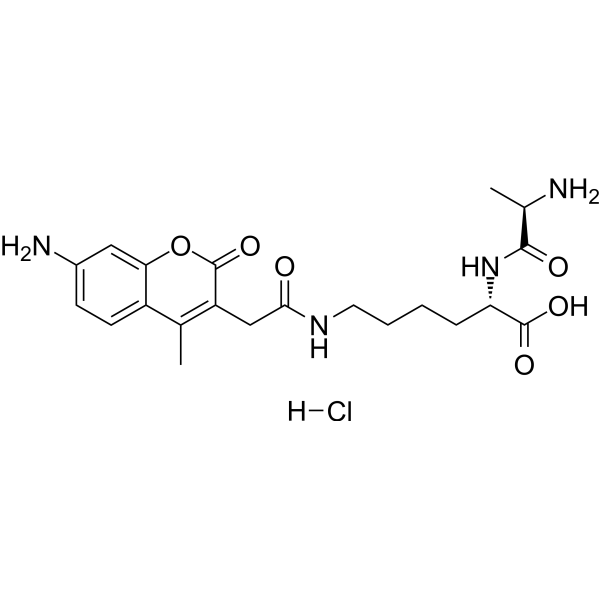
-
- HY-162239
-
|
|
Others
|
Cancer
|
|
Anticancer agent 187 (Compound 4) is an anticancer agent that can target sarcoma cells in tumor-bearing mouse models. Anticancer agent 187 exhibits cytotoxic activity against HepG2, Caco2, and MCF-7 cells .
|
-
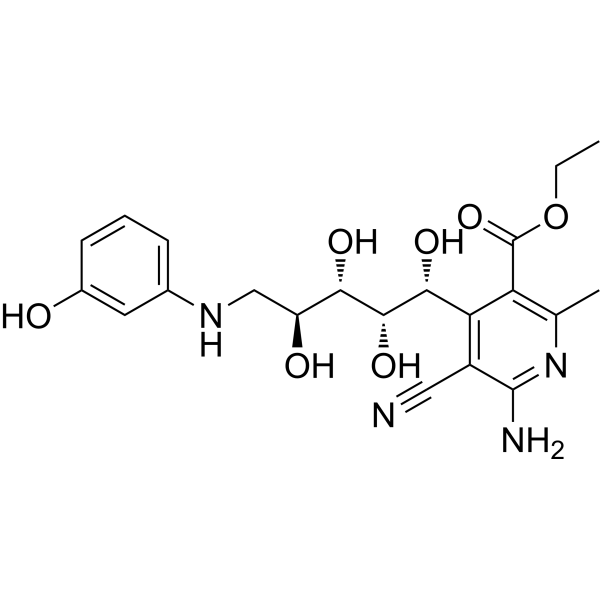
-
- HY-P5038
-
|
c(GRGDSP)
|
Integrin
|
Cancer
|
|
Cyclo(Gly-Arg-Gly-Asp-Ser-Pro) (c(GRGDSP)) is an RGD-containing inhibitory peptide. Cyclo(Gly-Arg-Gly-Asp-Ser-Pro) is a synthetic α5β1 integrin ligand that competitively inhibits the binding of invasin (Inv) to α5β1 integrin expressed on Caco-2 cells .
|
-

-
- HY-111956A
-
|
|
Fluorescent Dye
|
Cancer
|
|
D-Ala-Lys-AMCA TFA is a known proton-coupled oligopeptide transporter 1 (PEPT1) substrate that emits blue fluorescence. D-Ala-Lys-AMCA TFA may be transported into liver cancer cells and Caco-2 cells based on fluorescence analysis. D-Ala-Lys-AMCA TFA can be used for characterizing PEPT1-specific substrates or inhibitors .
|
-
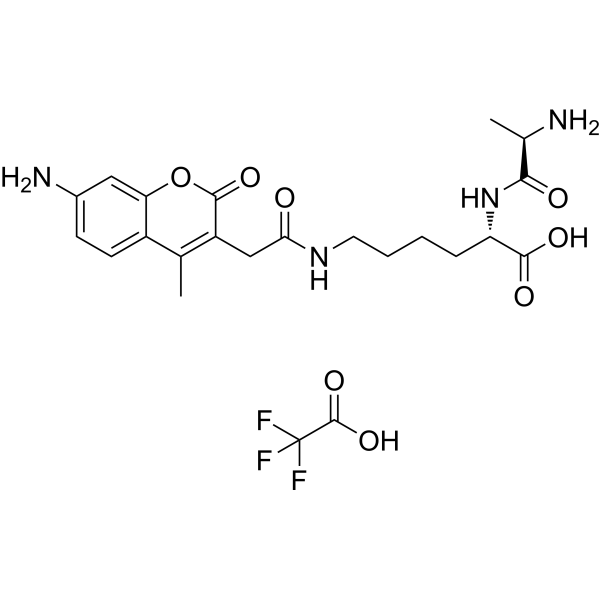
-
- HY-146078
-
|
|
Bacterial
|
Infection
|
|
Antimicrobial agent-1 (compound 6C) possesses potent activity against TolC mutant E. coli with an MIC value of 2 μg/mL. Antimicrobial agent-1 and Colistin exhibit synergistic activity against Gram-negative bacteria. Antimicrobial agent-1 has no cytotoxicity on mammalian cell lines, with MICs > 128 μg/mL in Caco-2 and Vero cell lines .
|
-
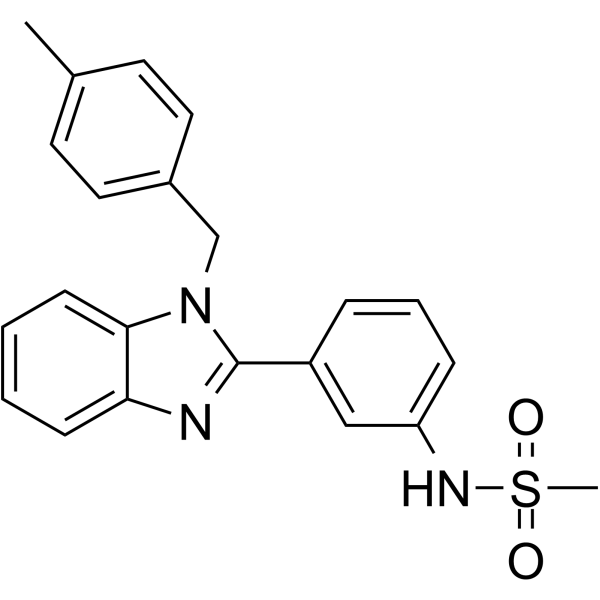
-
- HY-116788
-
|
|
Bacterial
|
Infection
|
|
Lipofermata is a fatty acid transport protein 2 (FATP2) inhibitor. Lipofermata shows fatty acid transport inhibition with an IC50 of 4.84 μM in Caco-2 cells. Lipofermata, an analog of spiro-indoline-thadiazole, shows zinc-specific suppression of antibacterial activity. Lipofermata perturbs zinc homeostasis in E. coli K-12 with a MIC of 16 μM .
|
-
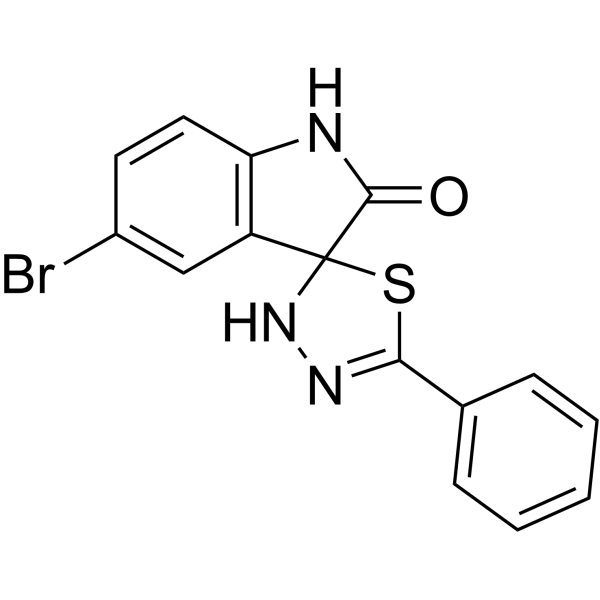
-
- HY-155337
-
|
|
Others
|
Cancer
|
|
eIF4E-IN-6(compound 4b) is a GMP analogs synthesized to targeteIF4Eand restrain its binding to cap mRNA.eIF4E-IN-6shows cell cytotoxicity against Caco-2, HepG-2,and MCF-7 cells, withIC50values of 31, 27, and 21 μM, respectively .
|
-
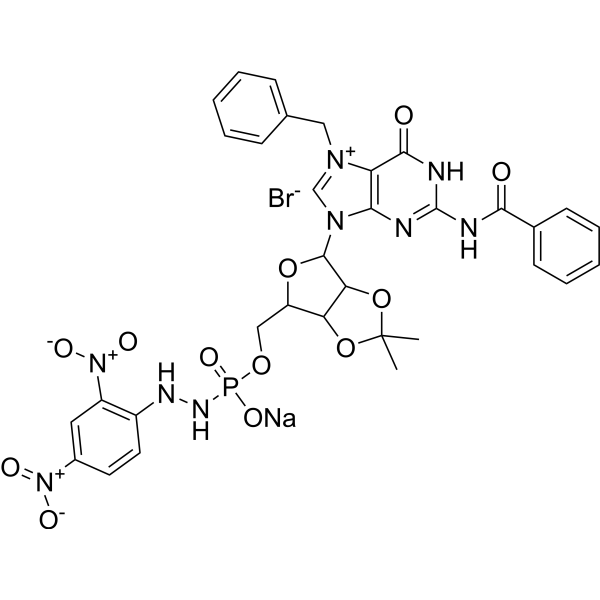
-
- HY-156965
-
|
|
Others
|
Metabolic Disease
Cancer
|
|
BAY-771, a structurally close pyrimidinedione, is a chemical probe with good lead-like properties and high permeability in Caco-2 cells (no hint of efflux). BAY-771 shows very weak inhibitory activity in the BCAT1 biochemical assay and no activity in BCAT2. BAY-771 can be used as a negative control of HY-148242 BAY-069. BAY-771 can be used for the research of tumor metabolism .
|
-
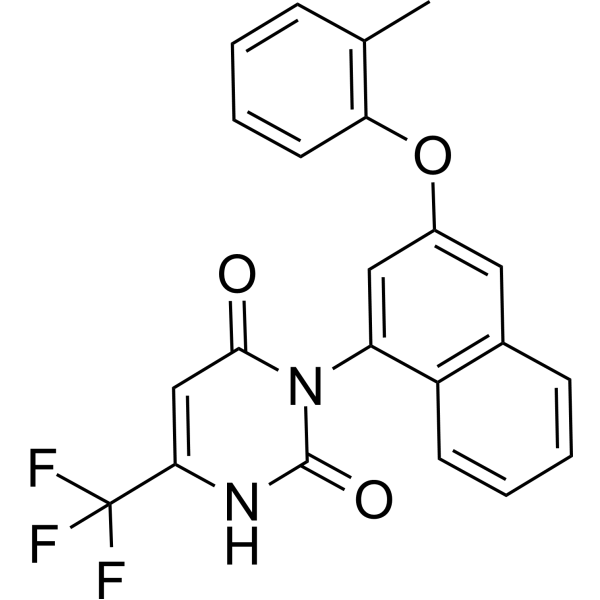
-
- HY-155328
-
|
|
HDAC
|
Inflammation/Immunology
|
|
GK444 (Compound 15a) is a HDAC1/2 inhibitor (IC50: 100 and 92 nM for HDAC1/2 respectively). GK444 inhibits Caco-2 cells with IC50 of 4.1 μM. GK444 also reduces TGF-β1 induced COL1A1 mRNA levels in primary normal human lung fibroblasts. GK444 inhibits Bleomycin (HY-108345)-induced lung fibrosis in mice .
|
-
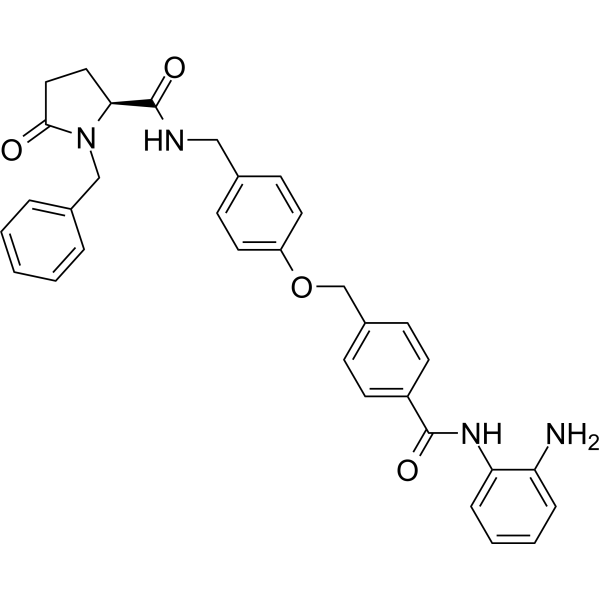
-
- HY-155027
-
|
|
Dipeptidyl Peptidase
TNF Receptor
Interleukin Related
|
Inflammation/Immunology
Cancer
|
|
DPP-4-IN-8 (compound 27) is a potent and selective DPP4 (dipeptidyl peptidase 4) inhibitor, with a Ki of 0.96 μM. DPP-4-IN-8 blocks the dipeptidase activity of DPP4 in both Caco-2 and HepG-2 cells. DPP-4-IN-8 also dose-dependently suppresses the expression levels of the chemokines tumor necrosis factor-α (TNF-α), interleukin-6 (IL-6), and interleukin-1β (IL-1β) .
|
-
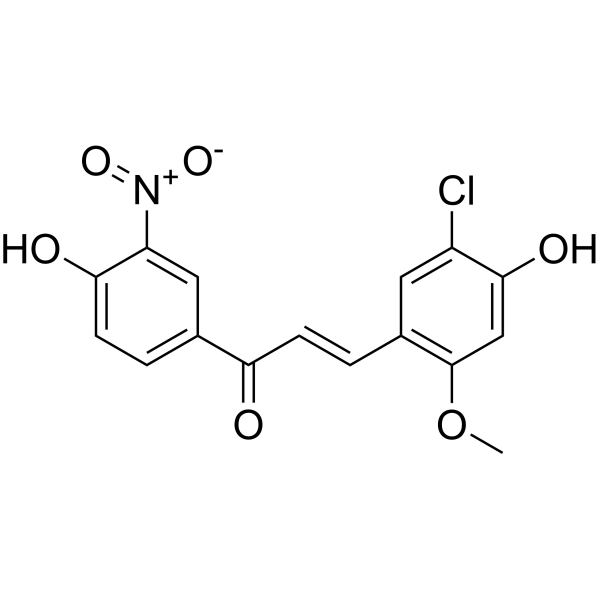
-
- HY-157404
-
|
|
Pim
|
Cancer
|
|
Pim-1/2 kinase inhibitor 2 (compound 5b) is a competitive PIM-1 and PIM-2 kinase inhibitor with IC50s of 1.31 μM and 0.67 μM, respectively. Pim-1/2 kinase inhibitor 2 shows in-vitro low cytotoxicity against normal human lung fibroblast Wi-38 cell line and potent in-vitro anticancer activity against myeloid leukaemia (NFS-60), liver (HepG-2), prostate (PC-3), and colon (Caco-2) cancer cell lines .
|
-

-
- HY-155478
-
|
|
Androgen Receptor
|
Cancer
|
|
Androgen receptor-IN-6 (compound 16) is an orally available androgen receptor (Androgen Receptor) potent inhibitor (IC50=0.12 μM in vitro), targeting the disordered N-terminal domain (NTD). Androgen receptor-IN-6 has good Caco2 cell membrane permeability and has an oral activity (F/%) of 16% in male CD-1 mice .
|
-
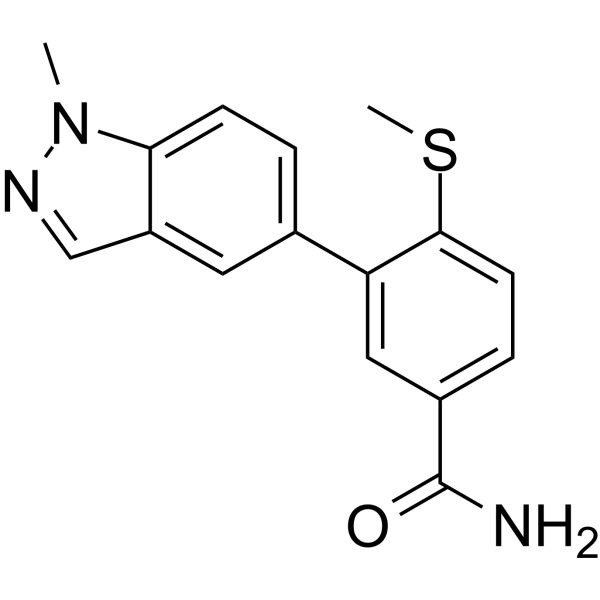
-
- HY-N3121
-
|
|
Others
|
Cancer
|
|
Pachypodol exerts antioxidant and cytoprotective effects in HepG2 cells .Pachypodol inhibits the growth of CaCo 2 colon cancer cell line in vitro(IC50 = 185.6 mM) .
|
-
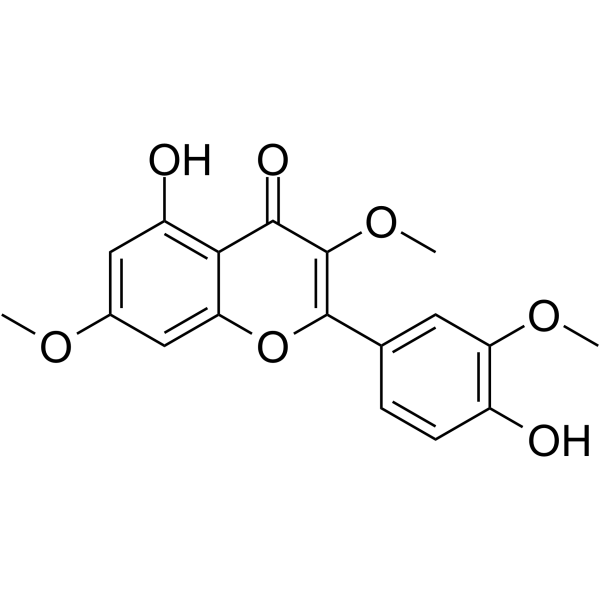
-
- HY-156253
-
|
|
Others
|
Cancer
|
|
Anticancer agent 166 (compound 3) is an anticancer agent with an excellent inhibition activity against Caco-2 (IC50 = 9.6 nM) .
|
-
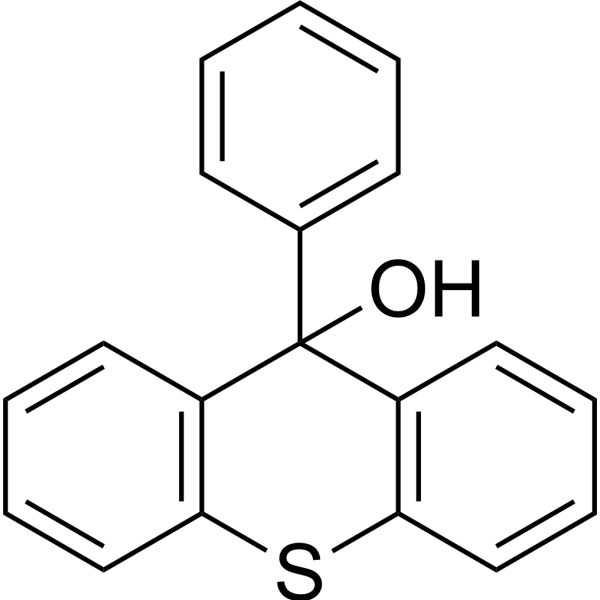
-
- HY-15951
-
|
CID44968231; NCGC00188654
|
CDK
DYRK
|
Cancer
|
|
ML167 is a highly selective Cdc2-like kinase 4 (Clk4) inhibitor with IC50 of 136 nM, >10-fold selectivity for closely related kinases Clk1, Clk2, Clk3 and Dyrk1A/1B .
|
-

-
- HY-160160
-
|
|
PPAR
|
Cancer
|
|
BAY-5516 is a inverse-agonist o PPARG, with the IC50 value of 6.1±3.6 nM that has anti-tumor effect .
|
-
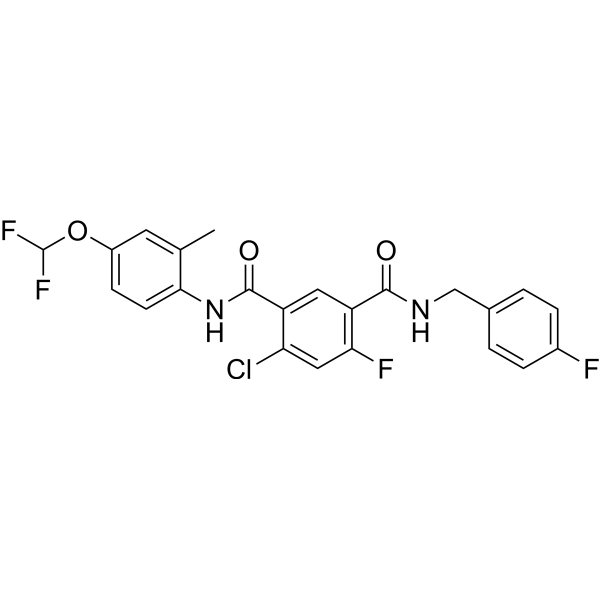
-
- HY-A0032A
-
|
|
CMV
|
Infection
Inflammation/Immunology
|
|
Valganciclovir hydrochloride is an orally active antiviral agent. Valganciclovir hydrochloride can inhibit the growth of adenoviruses and have a protective effect on immunosuppressed hamsters. Valganciclovir hydrochloride can be used for the research of Cytomegalovirus .
|
-
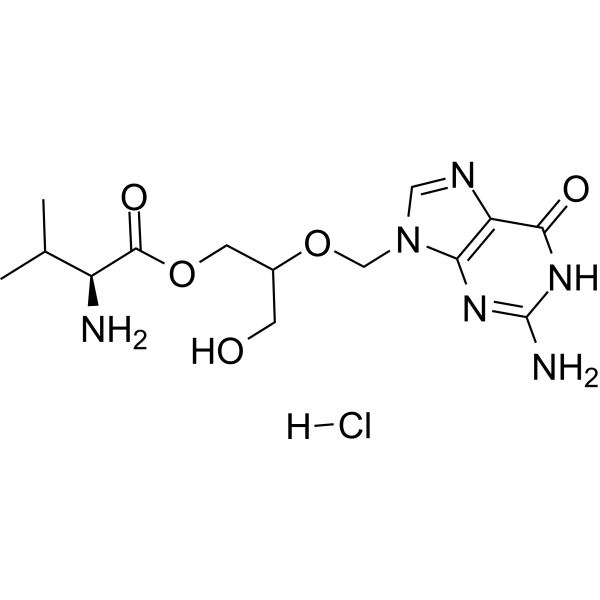
-
- HY-145147A
-
|
|
Bacterial
|
Infection
|
|
AAA-10 formic is an orally active gut bacterial bile salt hydrolases (BSH) inhibitor, with IC50s of 10 nM, 80 nM against B. theta rBSH and B. longum rBSH, respectively .
|
-
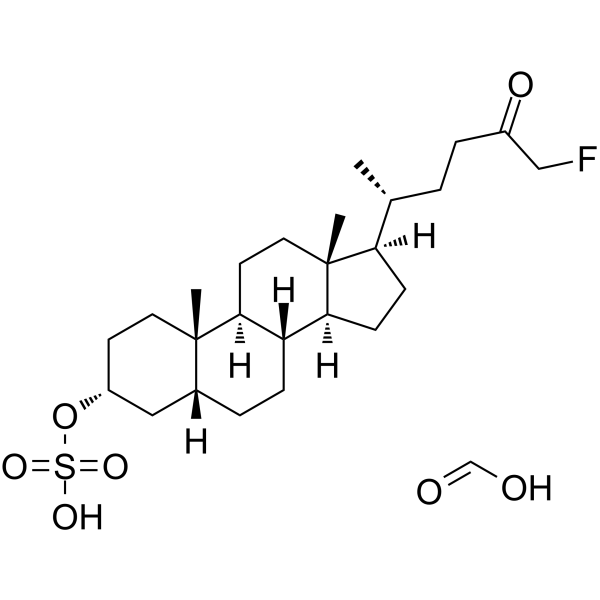
-
- HY-145147
-
|
|
Bacterial
|
Infection
|
|
AAA-10 is an orally active gut bacterial bile salt hydrolases (BSH) inhibitor, with IC50s of 10 nM, 80 nM against B. theta rBSH and B. longum rBSH respectively .
|
-
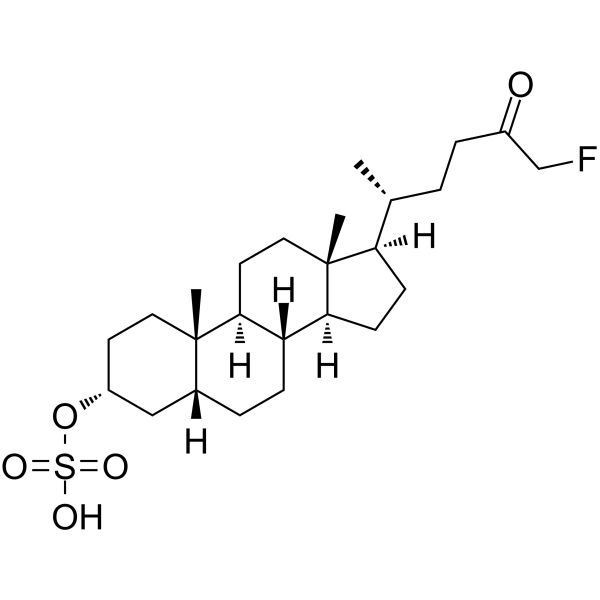
-
- HY-151133
-
|
|
Parasite
|
Infection
|
|
Antiparasitic agent-9 (compound 47) is an orally active and potent antiparasitic agent. Antiparasitic agent-9 shows antiparasitic activity against the human parasite .
|
-
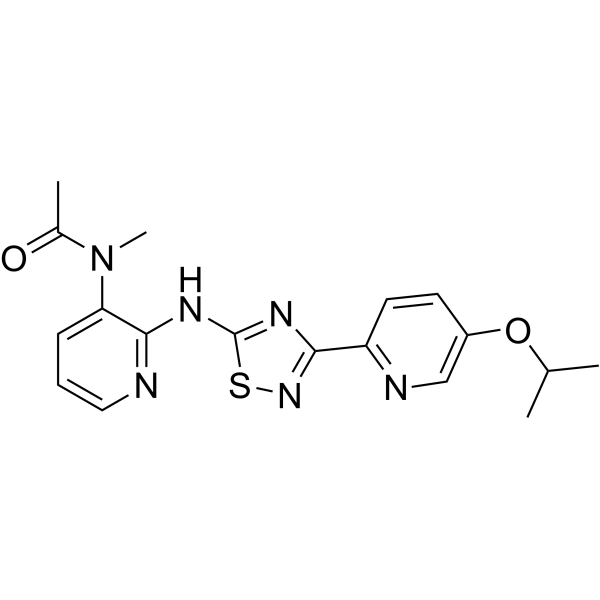
-
- HY-163402
-
|
|
EGFR
Apoptosis
|
Cancer
|
|
EGFR-IN-108 chloride (Compound Ru3S) is an EGFR inhibitor with an IC50 value of 5.8 nM for hEGFR. EGFR-IN-108 chloride induces apoptosis and has anti-proliferative activity against cancer cells. EGFR-IN-108 chloride also has anti-angiogenic effects .
|
-

-
- HY-113099
-
|
Indole-3-lactic acid
|
Endogenous Metabolite
|
Inflammation/Immunology
|
|
Indolelactic acid (Indole-3-lactic acid) is a tryptophan (Trp) catabolite in Azotobacter vinelandii cultures. Indolelactic acid has anti-inflammation and potential anti-viral activity .
|
-
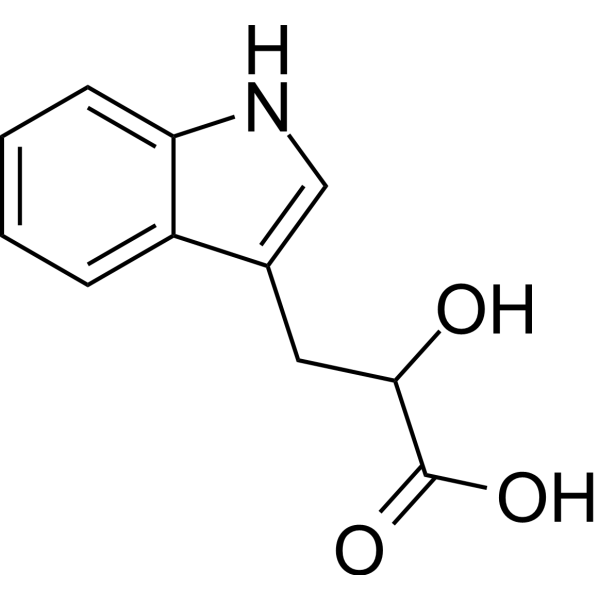
-
- HY-149940
-
|
|
SARS-CoV
|
Infection
|
|
SIMR3030 is a potent SARS-CoV-2 PLpro inhibitor with an IC50 value of 0.0399 µg/mL. SIMR3030 shows antiviral activity. SIMR3030 decreases SARS-CoV spike, ORF1b, IFN-α, IL-6 mRNA expression. SIMR3030 exhibits a satisfactory safety profile in mice .
|
-
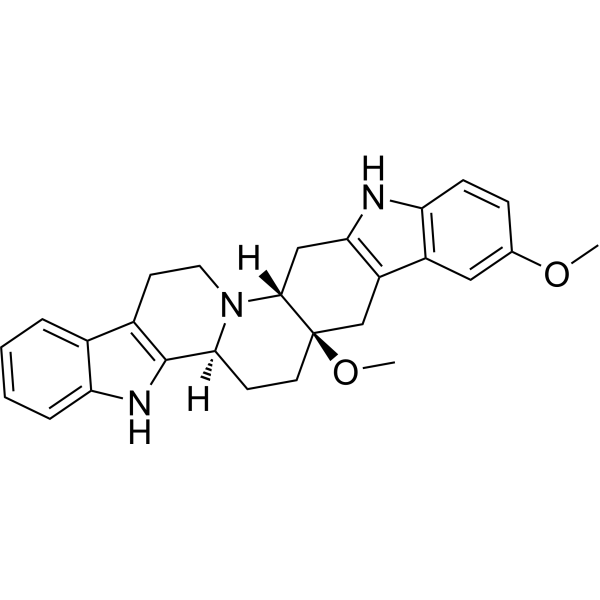
-
- HY-P0185
-
|
|
Opioid Receptor
|
Neurological Disease
|
|
Endomorphin 1, a high affinity, highly selective agonist of the μ-opioid receptor (Ki: 1.11 nM), displays reasonable affinities for kappa3 binding sites, with Ki value between 20 and 30 nM. Endomorphin 1 has antinociceptive properties .
|
-
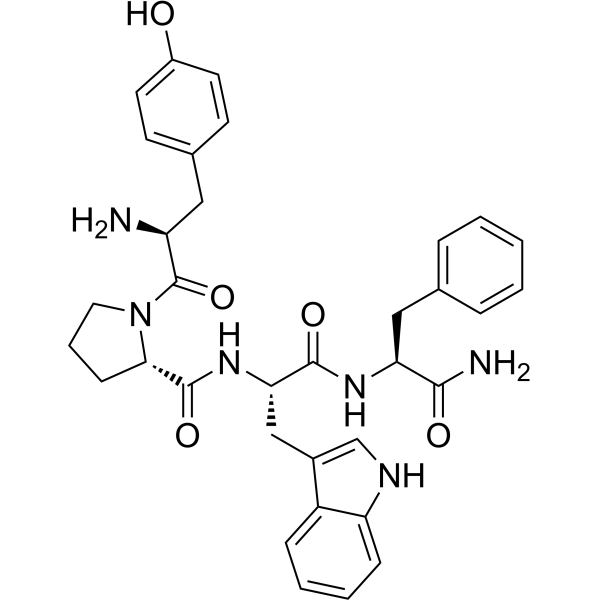
-
- HY-N6684
-
|
Vomitoxin
|
Others
|
Metabolic Disease
|
|
Deoxynivalenol, an orally active mycotoxin of the trichothecenes family, crosses the intestinal mucosa by a paracellular pathway through the tight junctions. The Deoxynivalenol transport is not affected by P-glycoprotein (PgP) or multidrug resistance-associated proteins (MRPs) inhibitors .
|
-
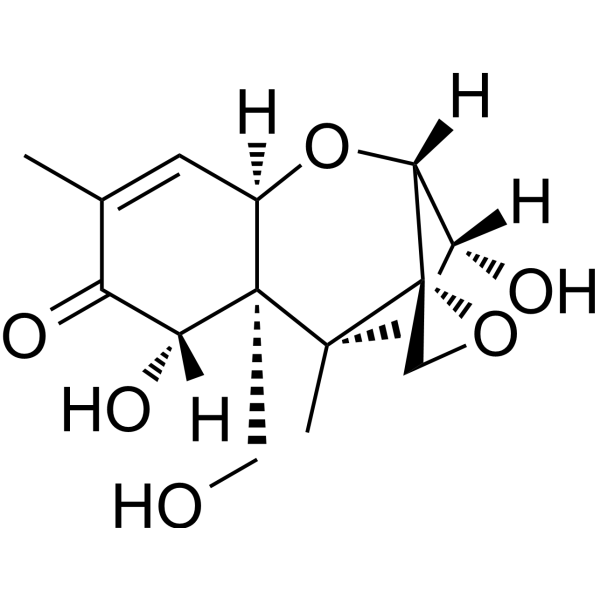
- HY-151247
-
|
|
GnRH Receptor
|
Cancer
|
|
GnRH-R antagonist 1 (compound 21a) is an orally safe and membrane-permeable GnRH-R antagonist with high binding affinity (IC50=0.57 nM) and potent in vitro antagonistic activity (IC50=2.18 nM). GnRH-R antagonist 1 can be used in studies of advanced prostate cancer and premature LH peaks preventing .
|
-
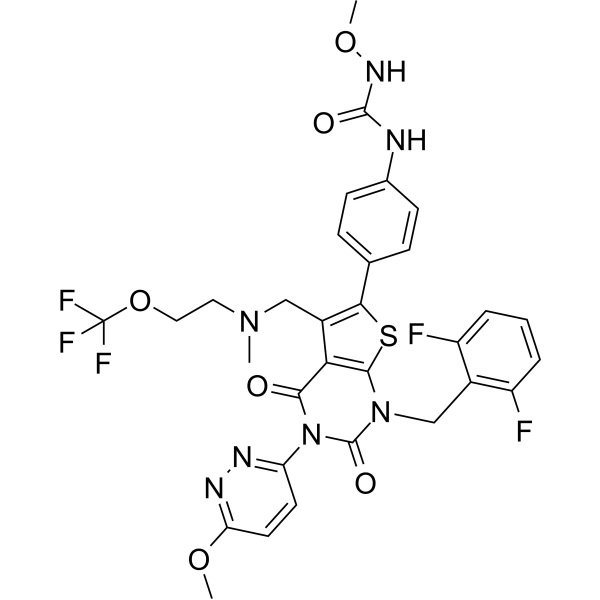
- HY-103595
-
|
Mepirizole; DA-398
|
Others
|
Inflammation/Immunology
|
|
Epirizole (Mepirizole) is an orally active NSAID (nonsteroidal anti-inflammatory agent). Epirizole shows anti-inflammatory activity, and can be used in chronic rheumatoid arthritis research .
|
-
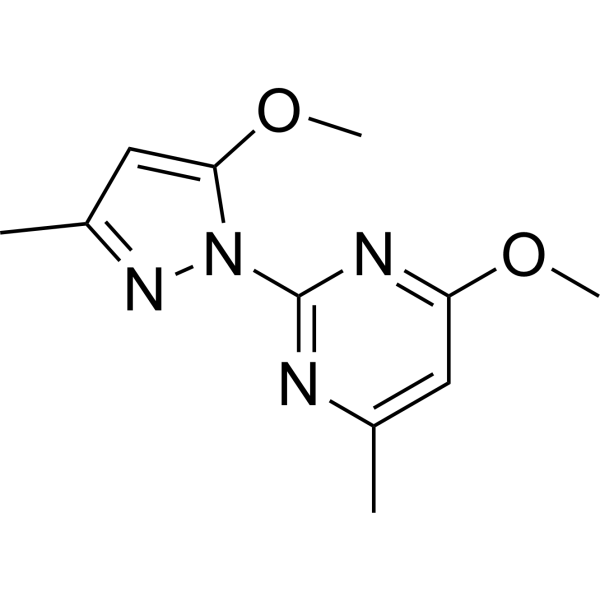
- HY-P0185A
-
|
|
Opioid Receptor
|
Neurological Disease
|
|
Endomorphin 1 acetate, a high affinity, highly selective agonist of the μ-opioid receptor (Ki: 1.11 nM), displays reasonable affinities for kappa3 binding sites, with Ki value between 20 and 30 nM. Endomorphin 1 acetate has antinociceptive properties .
|
-

- HY-148030
-
|
|
PROTACs
LRRK2
|
Neurological Disease
|
|
XL01126 is a potent degrader of LRRK2 with DC50s of 14 nM (G2019S LRRK2) and 32 nM (WT LRRK2), respectively. XL01126 can cross blood-brain barrier and be used as a degrader probe in Parkinson’s disease research. XL01126 exerts function of study of non-catalytic and scaffolding functions of LRRK2 .
|
-
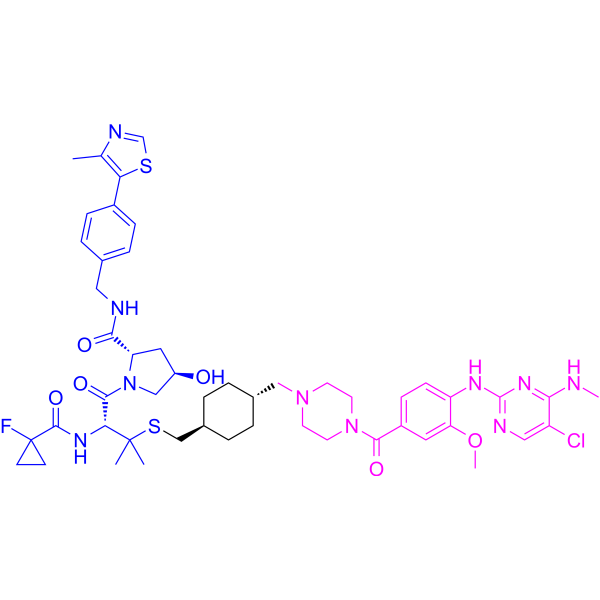
- HY-W011404
-
|
Glyceryl tributyrate
|
Apoptosis
|
Metabolic Disease
Cancer
|
|
Tributyrin (Glyceryl tributyrate), a neutral short-chain fatty acid triglyceride, is a stable and rapidly absorbed proagent of Butyric Acid. Tributyrin diffuses through biological membranes and is metabolized by intracellular lipases, releasing effective butyrate directly into the cell in vivo. Tributyrin has potent antiproliferative, proapoptotic and differentiation-inducing effects .
|
-
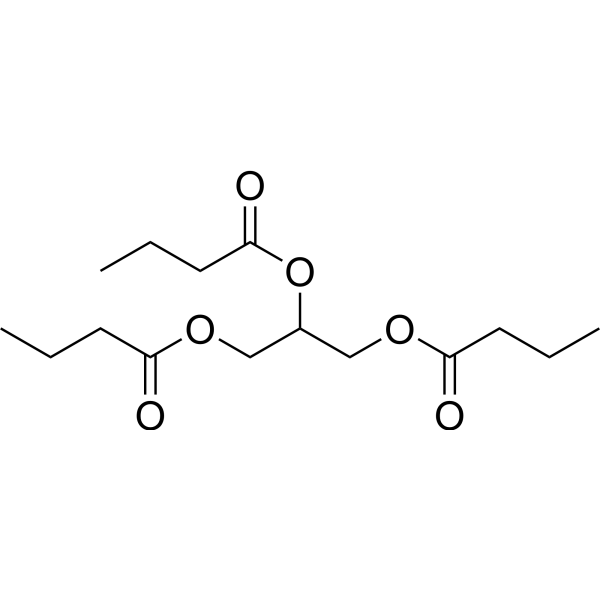
- HY-119873
-
|
REV 5320
|
NO Synthase
Adrenergic Receptor
|
Cardiovascular Disease
|
|
Celiprolol (REV 5320) is a potent, cardioselective and orally active β1-andrenoceptor r antagonist with partial β2 agonist activity, with Ki values of 0.14-8.3 μM. Celiprolol has antihypertensive and antianginal activity, and can be used for the research of cardiovascular disease such as high blood pressure .
|
-
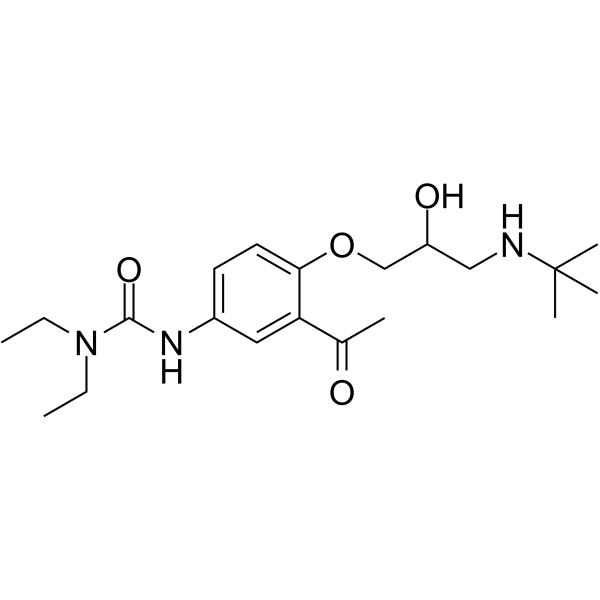
| Cat. No. |
Product Name |
Type |
-
- HY-111956B
-
|
|
Fluorescent Dyes/Probes
|
|
D-Ala-Lys-AMCA hydrochloride is a known proton-coupled oligopeptide transporter 1 (PEPT1) substrate that emits blue fluorescence. D-Ala-Lys-AMCA hydrochloride may be transported into liver cancer cells and Caco-2 cells based on fluorescence analysis. D-Ala-Lys-AMCA hydrochloride can be used for characterizing PEPT1-specific substrates or inhibitors .
|
-
- HY-111956
-
|
|
Fluorescent Dyes/Probes
|
|
D-Ala-Lys-AMCA is a known proton-coupled oligopeptide transporter 1 (PEPT1) substrate that emits blue fluorescence. D-Ala-Lys-AMCA may be transported into liver cancer cells and Caco-2 cells based on fluorescence analysis. D-Ala-Lys-AMCA can be used for characterizing PEPT1-specific substrates or inhibitors .
|
-
- HY-111956A
-
|
|
Fluorescent Dyes/Probes
|
|
D-Ala-Lys-AMCA TFA is a known proton-coupled oligopeptide transporter 1 (PEPT1) substrate that emits blue fluorescence. D-Ala-Lys-AMCA TFA may be transported into liver cancer cells and Caco-2 cells based on fluorescence analysis. D-Ala-Lys-AMCA TFA can be used for characterizing PEPT1-specific substrates or inhibitors .
|
| Cat. No. |
Product Name |
Type |
-
- HY-133948
-
|
Glyceryl palmitoleate
|
Biochemical Assay Reagents
|
|
1-Palmitoleoyl glycerol is a biologically active monoacylglycerol. It increases daunomycin accumulation, shown to inhibit P-glycoprotein in Caco-2 cells. 1-Palmitoleoyl glycerol induces thymocyte apoptosis.
|
| Cat. No. |
Product Name |
Target |
Research Area |
-
- HY-111956B
-
|
|
Fluorescent Dye
|
Cancer
|
|
D-Ala-Lys-AMCA hydrochloride is a known proton-coupled oligopeptide transporter 1 (PEPT1) substrate that emits blue fluorescence. D-Ala-Lys-AMCA hydrochloride may be transported into liver cancer cells and Caco-2 cells based on fluorescence analysis. D-Ala-Lys-AMCA hydrochloride can be used for characterizing PEPT1-specific substrates or inhibitors .
|
-
- HY-P4296
-
|
|
Amino Acid Derivatives
|
Others
|
|
H-Gly-Sar-Sar-OH is an orally active tripeptide. H-Gly-Sar-Sar-OH is transported through PepT1 within Caco-2 cells. H-Gly Sar Sar OH has potential applications in material transportation .
|
-
- HY-111956
-
|
|
Fluorescent Dye
|
Cancer
|
|
D-Ala-Lys-AMCA is a known proton-coupled oligopeptide transporter 1 (PEPT1) substrate that emits blue fluorescence. D-Ala-Lys-AMCA may be transported into liver cancer cells and Caco-2 cells based on fluorescence analysis. D-Ala-Lys-AMCA can be used for characterizing PEPT1-specific substrates or inhibitors .
|
-
- HY-P5038
-
|
c(GRGDSP)
|
Integrin
|
Cancer
|
|
Cyclo(Gly-Arg-Gly-Asp-Ser-Pro) (c(GRGDSP)) is an RGD-containing inhibitory peptide. Cyclo(Gly-Arg-Gly-Asp-Ser-Pro) is a synthetic α5β1 integrin ligand that competitively inhibits the binding of invasin (Inv) to α5β1 integrin expressed on Caco-2 cells .
|
-
- HY-111956A
-
|
|
Fluorescent Dye
|
Cancer
|
|
D-Ala-Lys-AMCA TFA is a known proton-coupled oligopeptide transporter 1 (PEPT1) substrate that emits blue fluorescence. D-Ala-Lys-AMCA TFA may be transported into liver cancer cells and Caco-2 cells based on fluorescence analysis. D-Ala-Lys-AMCA TFA can be used for characterizing PEPT1-specific substrates or inhibitors .
|
-
- HY-P0185
-
|
|
Opioid Receptor
|
Neurological Disease
|
|
Endomorphin 1, a high affinity, highly selective agonist of the μ-opioid receptor (Ki: 1.11 nM), displays reasonable affinities for kappa3 binding sites, with Ki value between 20 and 30 nM. Endomorphin 1 has antinociceptive properties .
|
-
- HY-P0185A
-
|
|
Opioid Receptor
|
Neurological Disease
|
|
Endomorphin 1 acetate, a high affinity, highly selective agonist of the μ-opioid receptor (Ki: 1.11 nM), displays reasonable affinities for kappa3 binding sites, with Ki value between 20 and 30 nM. Endomorphin 1 acetate has antinociceptive properties .
|
| Cat. No. |
Product Name |
Category |
Target |
Chemical Structure |
| Cat. No. |
Product Name |
Chemical Structure |
-
- HY-13749AS
-
|
|
|
Sitagliptin-d4 (phosphate) is the deuterium labeled Sitagliptin phosphate. Sitagliptin phosphate (MK-0431 phosphate) is a potent inhibitor of DPP4 with an IC50 of 19 nM in Caco-2 cell extracts[1][2].
|
-

-
- HY-14291S
-
|
|
|
Vildagliptin-d3 is the deuterium labeled Vildagliptin. Vildagliptin (LAF237) is a potent, stable, selective dipeptidyl peptidase IV (DPP-IV) inhibitor with an IC50 of 3.5 nM in human Caco-2 cells. Vildagliptin possesses excellent oral bioavailability and potent antihyperglycemic activity[1][2].
|
-

-
- HY-14291S2
-
|
|
|
Vildagliptin- 13C5, 15N (LAF237- 13C5, 15N; NVP-LAF 237- 13C5, 15N) is a 13C- and 15N-labeled Vildagliptin (HY-14291). Vildagliptin (LAF237) is a potent, stable, selective dipeptidyl peptidase IV (DPP-IV) inhibitor with an IC50 of 3.5 nM in human Caco-2 cells. Vildagliptin possesses excellent oral bioavailability and potent antihyperglycemic activity .
|
-

-
- HY-13749S1
-
|
|
|
Sitagliptin-d4 (hydrochloride) is the deuterium labeled Sitagliptin[1]. Sitagliptin (MK-0431) is a potent inhibitor of DPP4 with an IC50 of 19 nM in Caco-2 cell extracts[2].
|
-

-
- HY-14291S1
-
|
|
|
Vildagliptin-d7 is deuterium labeled Vildagliptin. Vildagliptin (LAF237) is a potent, stable, selective dipeptidyl peptidase IV (DPP-IV) inhibitor with an IC50 of 3.5 nM in human Caco-2 cells. Vildagliptin possesses excellent oral bioavailability and potent antihyperglycemic activity[1].
|
-

Your information is safe with us. * Required Fields.
Inquiry Information
- Product Name:
- Cat. No.:
- Quantity:
- MCE Japan Authorized Agent:
































































